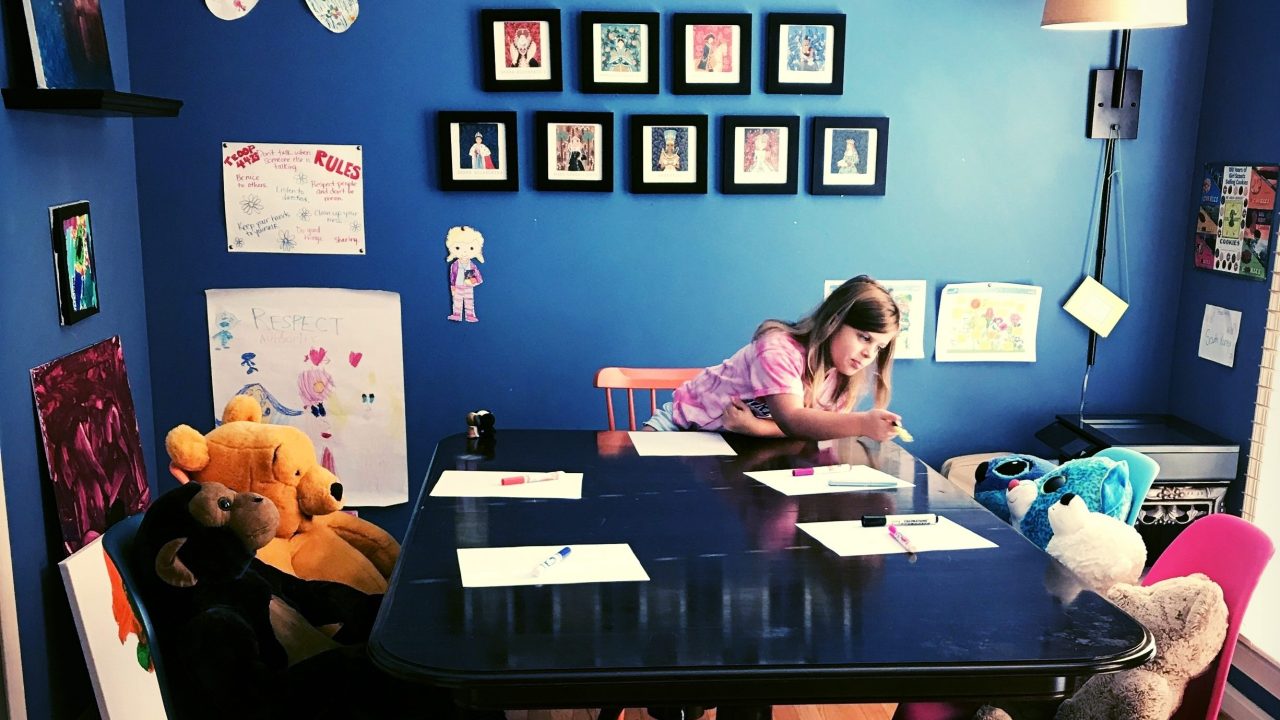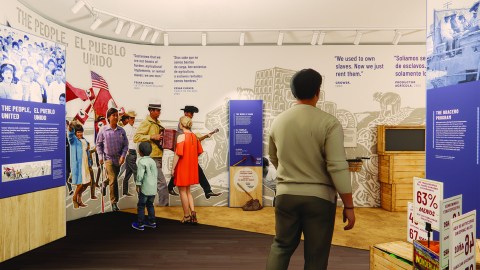
AAM’s Facing Change initiative has put the spotlight on museum board diversity, but not everyone thinks of bringing younger people onto the board when the topic comes up. Age diversity, though, can contribute to financial sustainability and good governance. In fact, boards with a higher percentage of directors under forty are more likely to ask others for money, tend to be more engaged in governance, and demonstrate a higher level of commitment to and involvement with the organization. Despite this, museum boards lag behind other nonprofits in their age diversity: only 26 percent of museum trustees are under fifty, compared with 43 percent of nonprofit trustees on the whole. Museums know this is a problem—43 percent of museum directors are dissatisfied with their board’s age diversity—but there hasn’t been an action plan for museums on how to recruit, retain, and develop young trustees. Few museums in the US have been able to turn intention for board age diversity into action, as Tate recently did in the UK with its appointment of Youth Engagement Trustee Anna Lowe.
I am part of the 26 percent of museum trustees under fifty, and it has become my personal mission to make board service more accessible for future generations, because I had no idea what a board was growing up, and as a Latina growing up as the youngest of five in Texas, I wasn’t supposed to be one of those people. I want my daughter to know that helping to lead a museum she loves is an option for her.
I presented a poster on board age diversity at AAM’s 2019 Annual Meeting in New Orleans, and I was heartened to see interest from trustees, executive directors, senior staff, development officers, and young prospective trustees. But the common thread in their responses was that no one knew where to begin. Museum trustees have resources available to them on board roles and responsibilities through the Museum Trustee Association and AAM’s Trustee Resource Center. These resources, however, can only take an organization so far in reaching its strategic goals if staff and trustees are not having a dialogue on issues of diversity and representation. Conversations about board diversity are happening in the corporate and nonprofit sectors, among museum staff, and in the boardroom, but they are often not having these conversations together.
I have tried to connect these thought leaders, museum professionals, and volunteers through personal outreach and on social media, strengthening the network of those of us who are passionate about bringing diverse backgrounds and ideas to the practice of governance. Through these connections, we can start to have frank discussions about how museums can best represent and reflect the communities we serve.
Drivers of Next-Gen Patronage
Creating a board environment that is welcoming to younger prospective trustees must start with an understanding of what motivates those under fifty to serve on museum boards.
- Sense of Community – The social aspects of board service—being part of a team and a larger community and developing personal and professional relationships within those spheres—will resonate with younger generations and help them feel valued.
- Tangible Impact on Mission – Younger generations are driven by values, and they prioritize impact over other criteria when evaluating their giving. These generations are drawn to social issues and will seek out opportunities that benefit the broader community and society at large. While a donor can see exactly where his or her money is going by sponsoring a gala, exhibit, or collection acquisition, this does not have the meaningful societal impact that younger donors crave. Younger generations are giving in different ways, viewing volunteering as a more meaningful way of interacting with the nonprofits they support than money.
- Personal and Professional Development – There can be a tendency to focus solely on the money or skills that potential board members bring, because those things are observable, while the intangibles of what they hope to learn can go unnoticed. Gen X-ers and millennials see the opportunity to mentor others as the most attractive aspect of a leadership role, while Gen Z-ers favor the high level of responsibility.
Action Plan for Board Age Diversity
Knowing how to put intention for board age diversity into action can be daunting if museums focus on the difficulties and stick with what has always been done. This action plan serves as an approachable guide for museums on how to add age diversity into the mix as they are looking to increase DEAI in their institutions.
- Recruit Intentionally and Strategically – Recruiting younger board members should be part of every museum’s short-term DEAI strategy. Instead of waiting for unicorn young trustees to fall into their laps, boards must establish clear goals and a plan for young trustee recruitment.
- Look beyond existing networks and reach out to young professionals’ organizations, executive search firms, community leaders, other nonprofits, and staff.
- Make sure the board and staff are on the same page about recruitment goals, because one of the biggest challenges to recruiting young board members might be the people trying to get them in the door. Unconscious bias training for the board and development staff might help dispel some of the preconceptions about younger donors.
- Consider revising policies like steep giving requirements and in-person meeting times that are inconvenient for busy professionals. Expecting younger donors to fulfill the same monetary or recruitment requirements might be unrealistic because they often do not have the same resources (yet) and want to give in different ways.
- Be strategic about how to make room for younger directors. This discussion should include whether to designate board spots for young directors and if term limits should be adjusted.
- Convince young people to prioritize giving over spending money elsewhere by reframing giving as a path to social engagement, career development, and investment in shaping the values of their children.
- To entice potential board leaders who love art, science, and history but choose to give time and money instead to organizations where they can have social impact, consider linking exhibitions to social issues that these generations care about.
- Prioritize Onboarding and Development – Keeping younger board members engaged and working hard in support of the museum’s mission is the second priority for institutions looking to reap the benefits of board diversity.
- There is a steeper learning curve for younger trustees. Once they are brought on, introduce them to the board’s policies, procedures, and culture through comprehensive onboarding.
- Remember that the transition to a museum board might be a natural move for young patrons who have progressed through other volunteer leadership positions in the organization, but generally there are cultural and process differences, and for all board members it can be difficult moving from work mode to board mode.
- Recruiting younger generations requires a commitment to help them succeed on the board. Engaged and helpful colleagues with a commitment to age diversity will help them adjust.
- Cultivate Leadership Pipeline – Growing future board leaders as a long-term age diversity strategy starts with getting them in the door. Those museums who do not have young patron pricing or programming should consider adding it, as appropriate.
- Consider programming that is geared toward the separate needs of two demographics: young singles interested in meeting people and networking, and young families who might be more interested in leading projects where they can get their kids involved, that they can juggle with work and family demands, or that have a virtual component.
- Make a commitment to leadership development that goes beyond preparing donors to join the board. A young trustee might invest decades in an organization, eventually chairing committees or the board, or moving into a senior staff position.
- Evaluate engagement on social media as an indicator of visitors’ potential to serve the organization. If visitors or donors are taking the time to broadcast a museum’s events and collection highlights to their own followers, in a sense demonstrating their loyalty to the institution and indirectly recruiting new members, then museums need to acknowledge these contributions to keep these future board members engaged and motivated.
- Consider a marketing and communications campaign to inform visitors about board structure and policies, humanize the board, and educate future board members. This does not just mean major donors whom the board is actively courting. This means children who visit on school trips whose parents have no experience with boards, because that is how the concept of board service becomes approachable.
For all these steps that museums can take to improve their cultivation and recruitment of young trustees, none will have a significant impact on board age diversity if young art, science, and history enthusiasts continue to think that they cannot have an impact or that board service is out of reach. Next-generation museum patrons must be proactive about engaging with institutions, take the initiative to demonstrate their value, and start building the leadership skills they will need to further the museum’s mission.
My advice to young donors and museum staff who aspire to board leadership: you do not have to wait until your sixties to get started on this path. You can start serving as social media evangelists for the institutions you love, get smart on good governance through research and following nonprofit and corporate thought leaders, propose ways to get involved, and focus on getting other next-gen patrons excited about supporting museums. Those of you who are already younger museum trustees can follow in the footsteps of a few others before you—like Colleen Dilenschneider, Chief Market Engagement Officer for IMPACTS, a member of the National Aquarium Board of Directors, and a millennial—and get the word out about board service on social media, mentor up-and-comers, and make the idea of giving back through volunteer leadership a regular part of the conversation around the dinner table.
About the author:
Christina Carr co-chairs the fundraising advisory board at the Smithsonian’s Freer Gallery of Art and Arthur M. Sackler Gallery and chairs the development committee for the Greater Reston Arts Center Board of Directors. She is the author of the blog NextGenPatron where she writes about board diversity, next-generation donors, and her experiences as a younger board member. She is a recent graduate of Harvard University’s Master’s in Museum Studies program and a member of AAM’s Latino Network and the Museum Trustee Association. Follow her @NextGenPatron.







